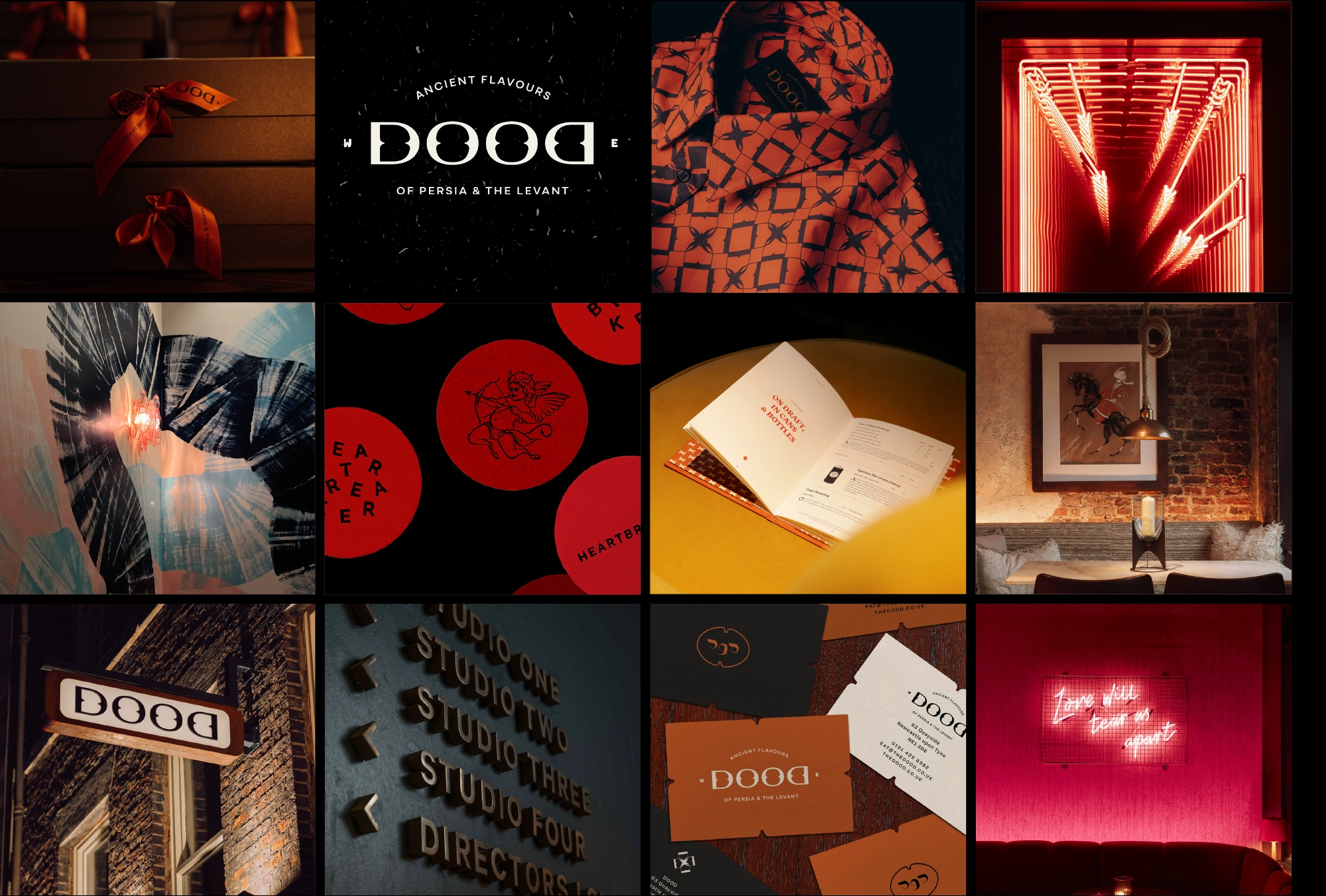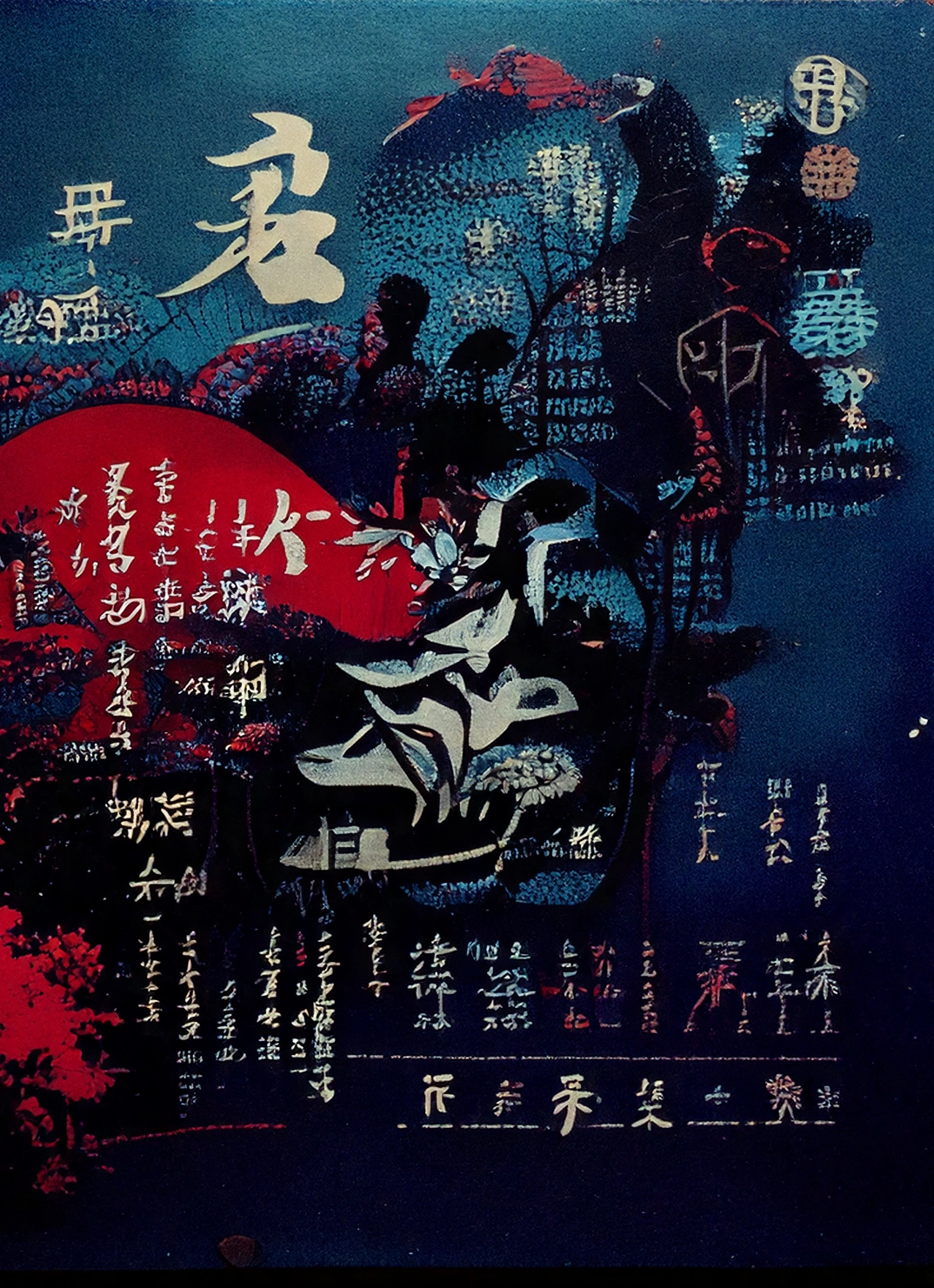Joined Up Design
Make sure your branding team and your interior design team are talking to each other. Ideally they should be actively collaborating – developing concepts together, side by side, right from the start. This ensures every touchpoint feels considered and cohesive. When the branding influences the interiors – and vice versa – you end up with a richer, more immersive experience.
If you’re working with an existing brand, allow some flexibility within any brand guidelines when taking it into a physical space. Brand colours that are bright and impactful on websites or printed materials might might feel garish in a candlelit dining room. The brand colour palette doesn’t need to be the same as the interiors one, but it should be in conversation with it. Sometimes this means creating harmony through a shared muted tone. Other times, it might mean stripping the brand colour out of the interior space entirely, and that’s okay too.
Just because a brand is bright yellow doesn’t mean the banquettes should be. So have a relaxed approach to the materiality of ‘branded’ elements like logotype signage and wayfinding.
Building a brand world
A memorable hospitality brand needs more than a nice wordmark. It needs a whole ecosystem – a visual language. That means typography, a defined colour palette, and a library of brand assets that can be used across all touchpoints. These might include custom photography, illustration styles, graphic patterns, textures, or even brand tone-of-voice cues.
These elements should extend beyond menus and printed materials – they should seamlessly bleed into the interior design too. A distinctive illustration might show up on bespoke wallpaper. The typefaces used on the menus are the same used on hand-painted wayfinding. Even thematically in the wall art. It’s all part of the same world.
The Power of Invisible Branding
Brand inspiration can come from decorative elements in the interior scheme. And brand imagery can make their way into bespoke fabric patterns, making sure the spaces we create are infused with what we like to call ‘invisible branding’.
So this doesn’t mean sticking logos everywhere – I am using the word ‘brand’ loosely to cover the more artistic touches we like to inject into the spaces we create.
From bespoke wallpapers subtly using illustrations we have created for the brands website, or creative neon installations of music lyrics that channel the spirit of the brand, or hand painted murals made from key colours from the interiors colour scheme.
We love what we call invisible branding – where brand DNA is present without being overt. This doesn’t mean sticking logos everywhere. Instead, it’s about embedding the spirit of the brand into the design in more subtle, artistic ways. It’s a hand-painted mural based on the colour palette of the space. A neon sign quoting a lyric that captures the brand’s personality. Or a fabric pattern based on a motif created for the website, reimagined for upholstery.
When done right, invisible branding turns the venue into an extension of the brand without ever shouting. Some guests might only feel it subconsciously and not be able to put the finger on why everything feels so harmonious.
Storytelling through space
The best hospitality spaces tell stories. Create a narrative for your concept – whether it’s inspired by place, history, character, or pure imagination. That story should weave through the interiors and the branding, informing the tone of voice, the style of photography, the design of the uniforms, and even the way your team greets guests. Make it feel authentic, detailed, and emotionally engaging. Make your customers feel like they’ve gone to another world, to the bustling streets of Mumbai, the Amazon rainforest or a Caribbean island.
Trendspotting
Keep your eyes open. Go on research trips. Immerse yourself in your niche. Visit your competitors, locally and in hospitality hotspots like London, Melbourne, New York. In the origin country of your concept or cuisine. See the what and the how of it all. See if there are any ‘trends’ to avoid. Trends can be tempting, but they often lead to generic design. They also age quickly. Why should all Greek restaurants be blue and white?
Be brave. Be unexpected. And whatever you do – don’t copy. Originality, not mimicry, is what makes a brand unforgettable. Be inspired by something, sure, but put your own spin on it to create something new and unique.





